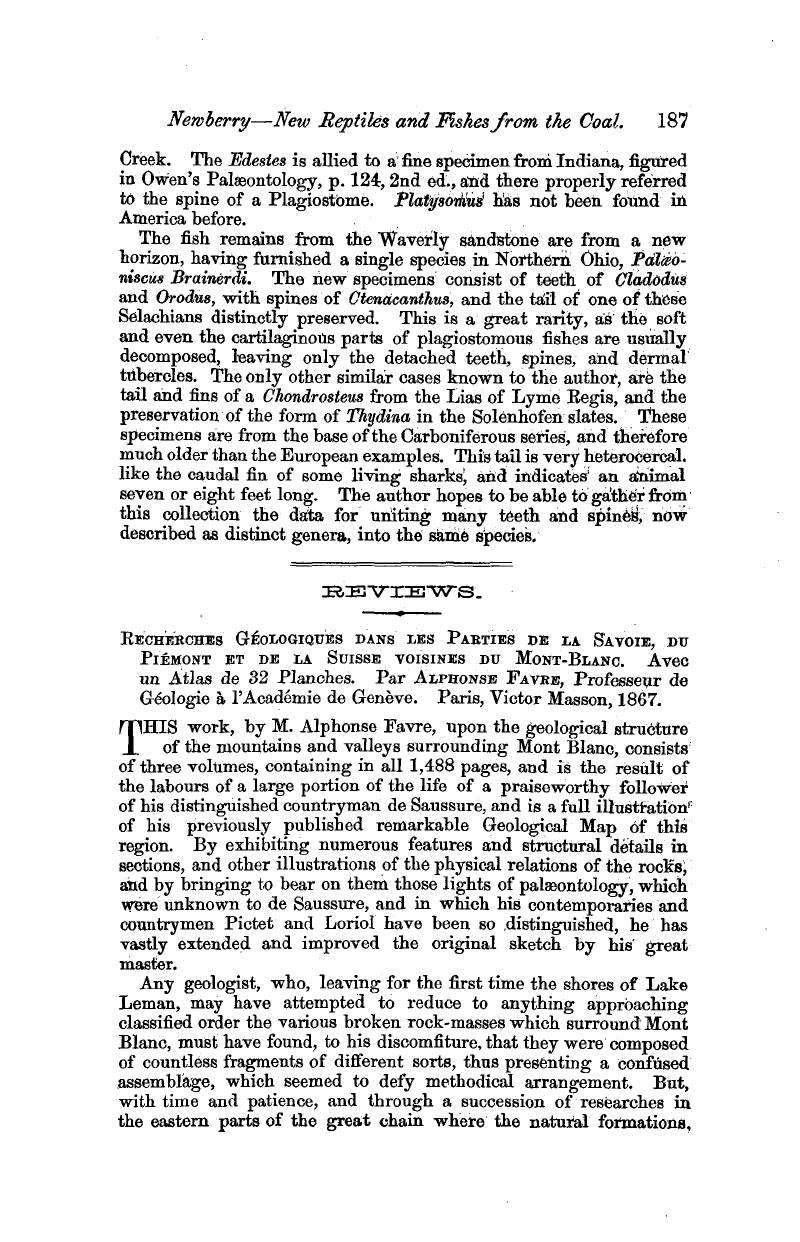No CrossRef data available.
Published online by Cambridge University Press: 01 May 2009

page 188 note 1 Annals of Philosophy.Google Scholar
page 188 note 2 Boué was the first to publish a geological map of Scotland, anno 1820.Google Scholar
page 189 note 1 The Geological Map of the Eastern Alps (Trans. Geol. Soc. 2nd Series, vol. iii. p. 35) which comprised the result of these and other researches, was executed by Murchison after the labour of three summers. It exhibited the real order of succession then known (1831), from the axial and oldest rocks to the secondary and tertiary deposits on either flank of the chain.Google Scholar See 2nd ser., vol. iii., pl. 35, in the Trans. Geol. Soc., with description thereof. See Sedgwick's explanatory preamble.Google Scholar
page 189 note 2 See particularly the Maps of the Alps published by Martin Schropp & Co., Berlin, which are essentially the results of the labours of von Buch.
page 189 note 3 To obtain a just appreciation of the value of the labours of the Austrian geologists, it is only necessary to inspect the sheet (No 6) of the remarkable general Map of the Austrian Monarchy, by Herrk. k. Director, Dr. Franz Bitter von Hauer, in which the various rocks of the Tyrolese, Milanese, and Venetian Alps are denned by 48 distinct colours and signs.
page 190 note 1 See also a just and highly favourable estimate of this work as given by Professor Studer, in Archives des Sciences Physiques et Naturelles, No. 121, Fevrier, 1868.Google Scholar
page 190 note 2 In the opinion of the geologists of the Geological Society of France who visited this tract, the views of M. Favre were fully sustained; and the area of observation considerably extended.—See Bull. Soc. de France, vol. xxii. p. 59, 1864–1865.Google Scholar
page 191 note 1 In proof of the assiduous labour with which M. Favre has ransacked every scrap of writing respecting this Alpine region, it may he stated that, in his history of the Carboniferous rocks, he refers, in one long chapter thereon, to eighty authorities who have published on the subject; and, of English geologists, he cites the names of Bakewell, Buckland, Buckman, Bunbury, De la Beche, James Forbes, W. Hamilton, L. Horner, Lyell, Murchison, Playfair, &c.
page 191 note 2 Vol. v., p. 186. In this work Sir Murchison, R. expresses his deep obligations to Cannon Chamouset, of Chambery, as well as to Pillet, M., for the accurate knowledge he obtained in company with them.Google Scholar
page 191 note 3 See Sedgwick, and Murchison, , Trans. Geol. Soc. 2nd Series, vol. iii. p. 301.Google Scholar
page 193 note 1 It is in the first volume of the work of M. Fayre, that the reader will find how he eliminates from each other the various superficial deposits, beginning witb what he calls the accumulations of the plain and the deposits of the Rhone and its leading affluents. He then describes the Quaternary Deposits, consisting of recent alluvium, terrace deposits with remains of extinct animals, glacier detritus, and still older marine deposits, with lignite.
page 194 note 1 See M. Favre's letter thereon to Sir Murchison, R., Phil. Mag., 03, 1865.Google Scholar
page 194 note 2 See Siluria, , 4th Edit. Frontispiece, Map, and pp. 24, 163.Google Scholar